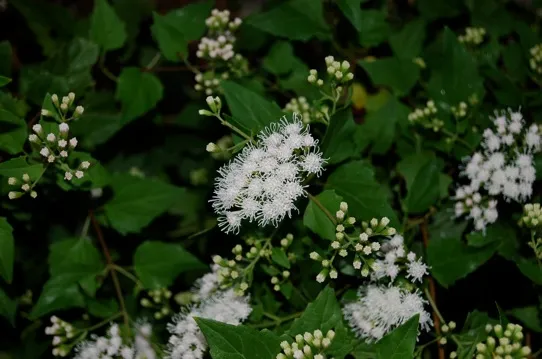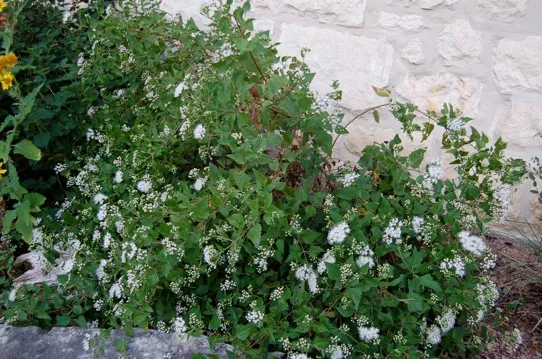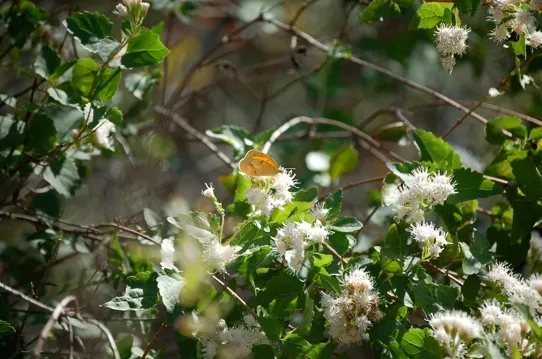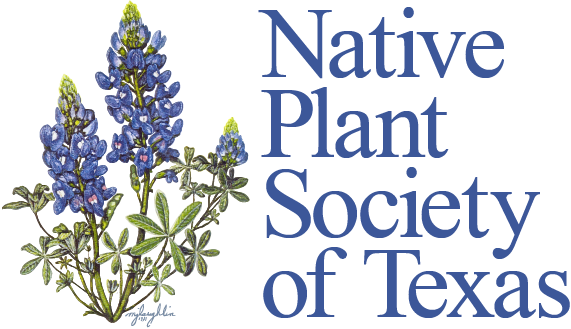By Delmar Cain
Toward the end of summer having moved through a brutal year of drought, many of us might be wondering what is going to happen to our yards and trees. A quarter-mile drive will reveal any number of trees whose leaves have turned brown and we can only hope that they are still alive, but in a dormant state. Grasses are brown, the leaves of the shrubs appear dry and wilted and wildflowers either bloomed briefly or just didn’t bother to germinate. Even individuals of the hardy invasive exotics like wax leaf ligustrum (Ligustrum japonica) appear to be either dying or going dormant.

Here in Kendall County we have been put on notice that we may have to go Stage 6 of the Cow Creek Groundwater Conservation District (CCGCD) drought restrictions. If we do, one possible measure that the CCGDC can impose is prohibiting the irrigation of lawn and landscape at all times. Although it might not be a good time to make new additions to your yard, it is definitely the time to consider some tough plants for the future.
One tough plant that fits the bill is thoroughwort (Ageratina havanensis), also known as shrubby boneset, white mistflower or Havana snakeroot. Its ability to take the heat and the drought is one of the reasons why the Boerne Chapter of the Native Plant Society of Texas (NPSOT) has selected this Hill Country endemic as its NICE (Native Instead of Common Exotic) plant of the month.
When we moved to Boerne in 2005 I noticed a plant that grew along the ridge of a limestone bluff at our house. It seemed to grow right out of the rocks. In the autumn it bloomed with prolific, long lasting, fragrant white flowers. It was a real butterfly magnet. Bill Carr, with the Nature Conservancy, on a nature walk identified it as “shrubby boneset” (Eupatorium havanense, a less recent scientific name) and I later found it in Enquist’s book, Wildflowers of the Texas Hill Country, identified as “thoroughwort.”

I have seen the plant at 3 other places and the locations will give you some idea of its versatility. It is used so extensively at the San Antonio Botanical Garden that in many places it is not even identified. It is used on slopes, under trees and as backgrounds for accent plants.
On a trip with Bill Ward I found the plant growing in the Canyon Lake Gorge– that area where the flood of 2002 bypassed the Canyon Lake dam and washed out a significant ditch, revealing an amazing amount of geologic history. Thoroughwort plants were growing in the limestone cracks in the ditch.
Finally my friend, Marvin Hatter, has a thoroughwort on steroids growing at his house. It is growing in typical pasture like soil, gets extra water and apparently appreciates both. The plant is at least 6 feet high and 8-10 feet wide.

So what kind of plant is this thoroughwort, or Havana snakeroot (Ageratina havanensis) as it is listed at the Lady Bird Johnson Wildflower Center? It is a perennial multi-branched shrub, generally 2-6 feet in height that is endemic to the southern part of the Hill Country. Usually found on rocky hillsides or ledges, it adapts to most well drained soils. It grows in full sun and in part shade, but grows bushier and blooms better if it is cut back after the fall bloom period. In my area the deer do the pruning for me, but the plants still manage to bloom in the fall. None of my plants get any water, except for a couple of plants that are adjacent to the house.
It is an attractive plant with deltoid shaped green leaves, coarsely toothed, and up to 3 inches in length. The leaves alternate growing up the many stems that rise from its base. But the beauty of the plant, its profusion of small white flowers appear in the late summer and fall, attracting butterflies, bees, and hummingbirds, which might have chosen not to migrate. In warm years the plant may still have flowers in December.
Thoroughwort is a worthy selection for an under story plant, for a rocky slope or at the edge of a woodland. For planting instructions, check the website for the Boerne Chapter of NPSOT.

You will not find thoroughwort at a big box nursery. But you can find it at Medina Garden Nursery and Natives of Texas, both located on Highway 16 between Bandera and Kerrville. Since we might not have wildflowers for the fall, I heartily recommend a trip to Medina Garden Nursery to see the wildflowers that Ernesto Carino is growing and has protected in this drought. It will lift your spirits.
For another option for your yard you might want to consider native grasses. On September 10th, the Fredericksburg Chapter of NPSOT is sponsoring its 6th Annual Wildscapes Workshop, an all day program on native grasses, with a featured speaker, Bill Neiman, owner of Native American Seed in Junction. The program goes from 7:30 AM-3:00 PM and will be located at the Fredericksburg United Methodist Church, 1800 North Llano Street in Fredericksburg.
